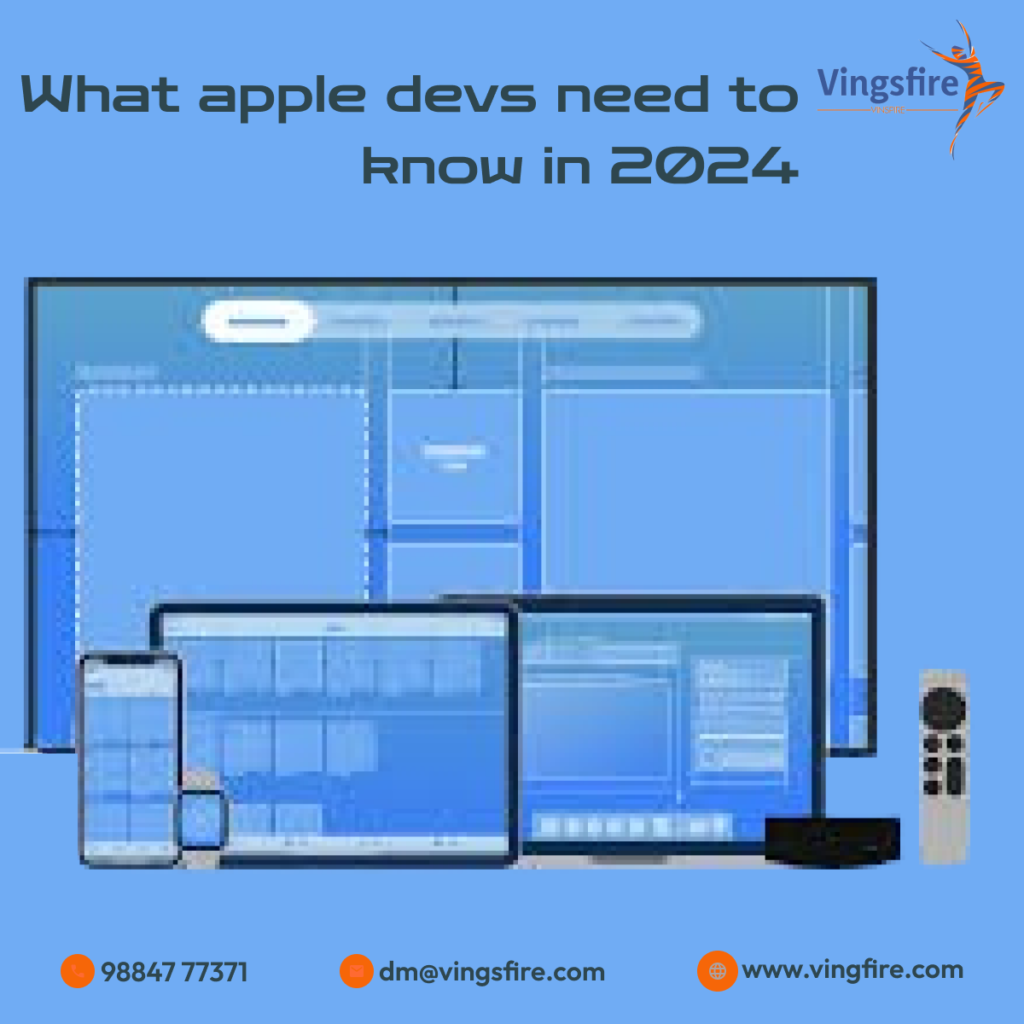
As we step into 2024, Apple developers find themselves at the forefront of an ever-evolving tech landscape. Staying ahead in the fast-paced world of Apple development requires a keen understanding of emerging trends, updates, and best practices. In this comprehensive guide, we’ll explore what Apple devs need to know in 2024, covering key areas that will shape the future of iOS, macOS, and other Apple platforms.
I. Swift 6 and Beyond:
Swift, Apple’s programming language, continues to evolve. In 2024, Swift 6 is expected to bring new features, improvements, and optimizations. Developers should stay abreast of the language’s updates, exploring how new capabilities enhance their coding experience and improve app performance.
- Concurrency: Swift 6 is likely to introduce enhanced support for concurrent programming. Developers should explore concurrency patterns and take advantage of new language features to write more efficient and responsive code.
- Swift Package Manager: As Apple emphasizes modularity and package-based development, understanding and utilizing Swift Package Manager becomes increasingly crucial. Developers should leverage this tool for dependency management and building modular, maintainable codebases.
II. SwiftUI Maturity:
SwiftUI, Apple’s declarative UI framework, has been steadily maturing since its introduction. In 2024, we can expect further advancements and increased adoption. Apple developers should invest time in mastering SwiftUI for a more efficient and flexible approach to building user interfaces.
- Cross-Platform Development: With SwiftUI gaining traction, Apple developers can explore the potential for cross-platform development, creating apps for iOS, macOS, watchOS, and tvOS with shared code and a consistent user experience.
- SwiftUI Libraries and Components: Stay updated on the growing SwiftUI ecosystem. Third-party libraries and components can significantly accelerate development, providing ready-made solutions for common UI patterns.
III. Apple Silicon Optimization:
Apple’s transition to using its custom silicon in Macs brings new opportunities and challenges for developers. In 2024, optimizing applications for Apple Silicon will be crucial for delivering optimal performance on the latest hardware.
- Universal Binaries: Embrace the universal binary format to create apps that run seamlessly on both Intel-based and Apple Silicon Macs. Ensure your apps take full advantage of the performance benefits offered by Apple’s M-series chips.
- Metal API Enhancements: Keep an eye on updates to the Metal API for graphics and compute tasks. Optimizing your app’s use of Metal can lead to better graphics performance and improved user experiences.
IV. Privacy and Security Focus:
Apple’s commitment to user privacy and security continues to be a central theme. In 2024, developers should pay close attention to new privacy-centric features, guidelines, and best practices.
- App Tracking Transparency: With the introduction of App Tracking Transparency, developers need to respect user privacy by obtaining explicit consent for tracking. Understand the implications and implement user-friendly mechanisms to request permissions.
- Secure Coding Practices: Stay vigilant about adopting secure coding practices. Regularly review and update your app’s security measures to protect user data and maintain user trust.
V. AR and Machine Learning Integration:
Apple’s ARKit and Core ML frameworks are powerful tools for incorporating augmented reality and machine learning into applications. In 2024, developers should explore creative ways to leverage these technologies to enhance user experiences.
- AR Experiences: Experiment with ARKit advancements for creating immersive augmented reality experiences. Explore new possibilities for gaming, navigation, and interactive content.
- Machine Learning Integration: Integrate machine learning models into your apps using Core ML. Whether for image recognition, natural language processing, or personalized experiences, machine learning can elevate your app’s capabilities.
VI. App Store Optimization:
The App Store remains a critical platform for reaching users. Developers should focus on optimizing their app listings, embracing new distribution models, and adhering to App Store guidelines.
- App Store Product Pages: Craft compelling app descriptions, utilize high-quality visuals, and leverage user reviews to enhance your app’s visibility and appeal.
- Subscription Models: Explore the potential of subscription-based models for your apps. Apple continues to encourage developers to offer sustainable revenue models through subscriptions.
Conclusion:
In the dynamic realm of Apple development, staying informed and adaptable is key to success. As we navigate 2024, Apple developers should embrace Swift updates, master SwiftUI, optimize for Apple Silicon, prioritize privacy and security, explore AR and machine learning, and fine-tune their App Store strategies. By keeping a finger on the pulse of Apple’s ecosystem, developers can ensure their apps not only meet current standards but also pave the way for innovative and engaging experiences in the future.
